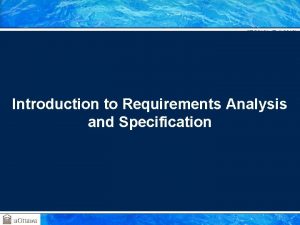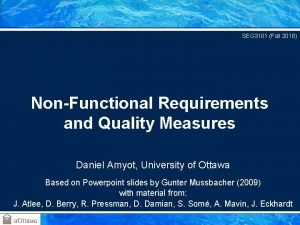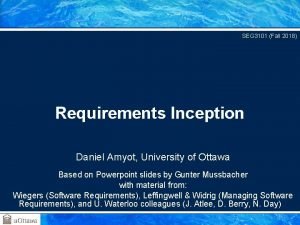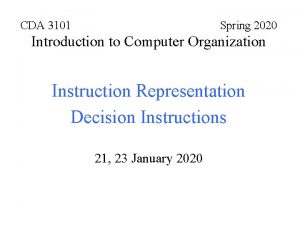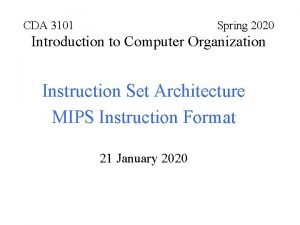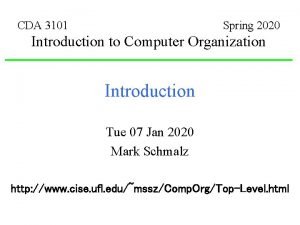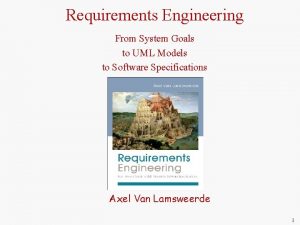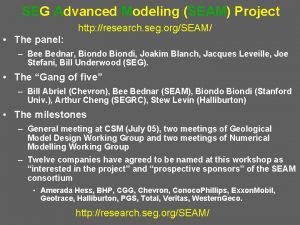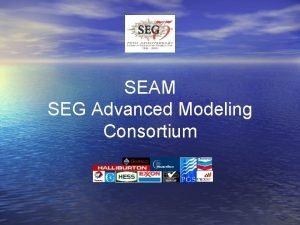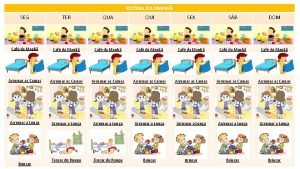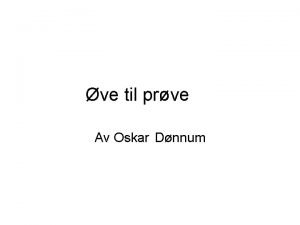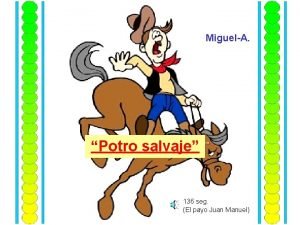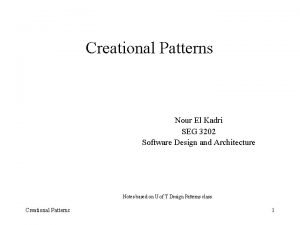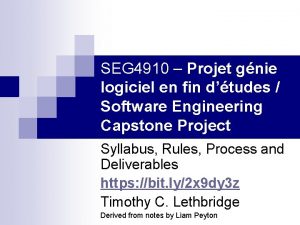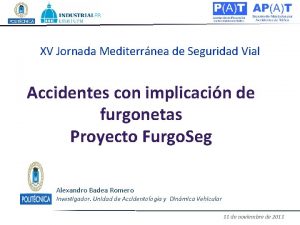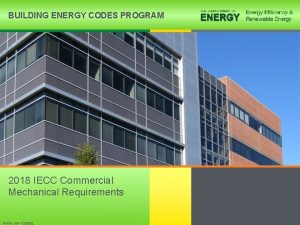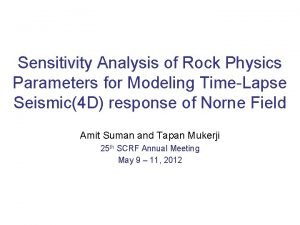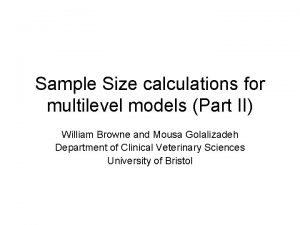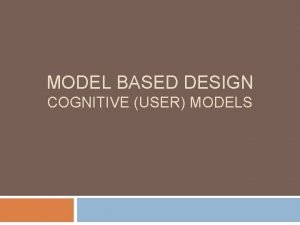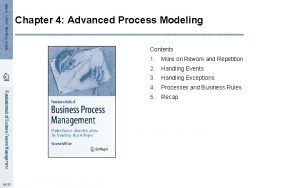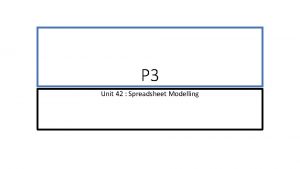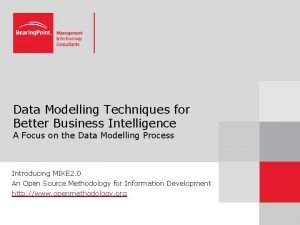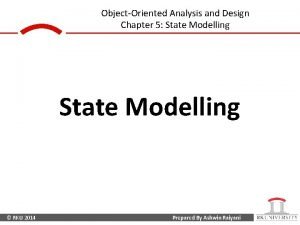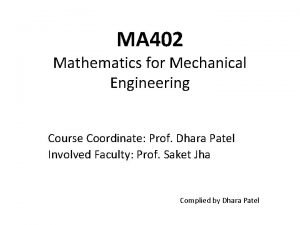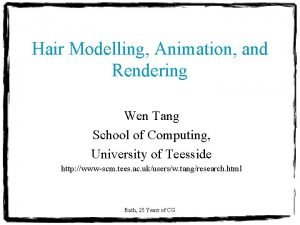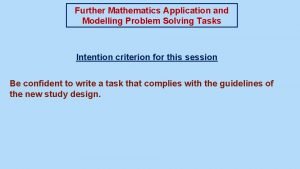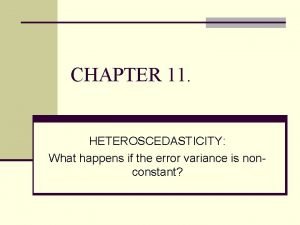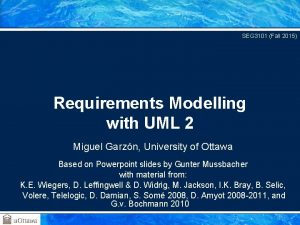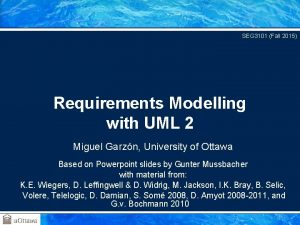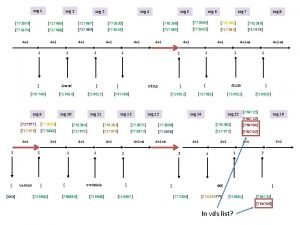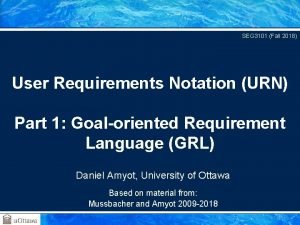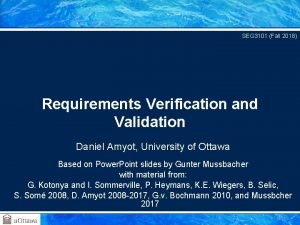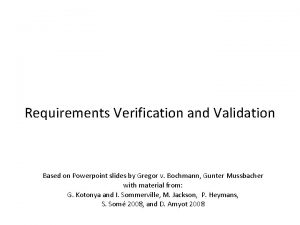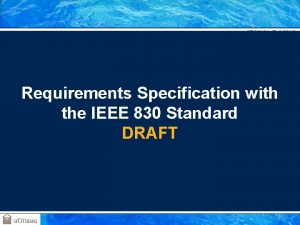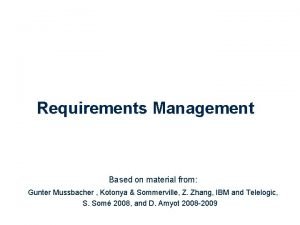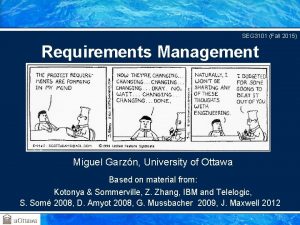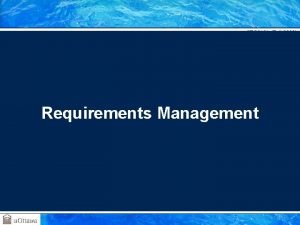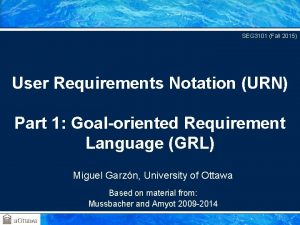SEG 3101 Fall 2018 Requirements Modelling with UML

































![Guards (Conditions) • Conditional execution of transitions bid [value < 100] /reject Selling bid Guards (Conditions) • Conditional execution of transitions bid [value < 100] /reject Selling bid](https://slidetodoc.com/presentation_image_h/7eecfbfdfe86cfae16ff4fef3afa1735/image-34.jpg)












- Slides: 46

SEG 3101 (Fall 2018) Requirements Modelling with UML 2 Daniel Amyot, University of Ottawa Based on Powerpoint slides by Gunter Mussbacher with material from: B. Selic, Brugge & Dutoit, developpez. com, S. Somé 2008, D. Amyot 2008 -2018, et G. v. Bochmann 2010

Overview • Models and Analysis • UML for Requirements Engineering • UML Class Diagrams for Domain Models • UML State Diagrams for lifecycles SEG 3101. Requirements Modelling with UML 2

All models are false, but some models are useful… George Edward Pelham Box (1919 -2013) SEG 3101. Requirements Modelling with UML 3

Models • According to Bran Selic, a model is a reduced representation (simplified, abstract) of (one aspect of) a system used to: • Help understand complex problems and / or solutions • Communicate information about the problem / solution • Direct implementation (especially in software) • Qualities of a good model • Abstract • Understandable • Accurate • Predictive • Inexpensive SEG 3101. Requirements Modelling with UML 4

Modeling Representations • Natural language (English) + No special training required - Ambiguous, verbose, vague, obscure. . . - No automation • Ad hoc notation (bubbles and arrows) + No special training required - No syntax formally defined meaning not clear, ambiguous - No automation • Semi-formal notation (URN, UML. . . ) + Syntax (graphics) well defined + Partial common understanding, reasonably easy to learn + Partial automation - Meaning only defined informally - Still a risk of ambiguities • Formal notation (Logic, SDL, Petri nets, FSM. . . ) + Syntax & semantics defined + Great automation (analysis and transformations) - More difficult to learn & understand SEG 3101. Requirements Modelling with UML 5

Model Analysis • By construction • We learn by questioning and describing the system • By inspection • Execute/analyze the model in our minds • Reliable? • By formal analysis • Requires formal semantics (mathematical) and tools • Reliable (in theory), but expensive (for certain modeling approaches) • By testing • Execution, simulation, animation, test. . . • Requires well-defined semantics and execution/simulation tools • More reliable than inspection for certain aspects • Possible to interact directly with the model (prototype) SEG 3101. Requirements Modelling with UML 6

UML and Requirements Engineering

History of UML (http: //www. omg. org/uml/) Rumbaugh Jacobson Booch http: //www. omg. org/uml/ Official Version 2. 5 (June 2015) “Simplified”… only 794 pages! Source: http: //en. wikipedia. org/wiki/Unified_Modeling_Language SEG 3101. Requirements Modelling with UML 8

Dilbert on Standards SEG 3101. Requirements Modelling with UML 9

Thirteen Diagram Types in UML 2. x • According to UML Reference Manual • Structural • Class, object, composite structure, component, and use case diagrams • Dynamic (that is, describing dynamic behavior) • State machine, activity, sequence, communication, timing, and interaction overview diagrams • Physical • Deployment diagrams • Model Management • Package diagram SEG 3101. Requirements Modelling with UML 10

Most Relevant for Requirements Engineering • Use case diagram • Use cases structuring • Activity diagram • Workflow and process modeling • Concepts much related to concepts of Use Case Maps • Sequence diagram • Modeling of message exchange scenarios • Class diagram • Domain modeling • State machine diagram • Detailed behavioral specification (of objects, protocols, ports…) • System behaviour (black box) • Object/document lifecycles SEG 3101. Requirements Modelling with UML 11

Basic Notational Elements of Activity Diagrams • Describe the dynamic behavior of a system as a flow of activities (workflow) • Flow • Sequence • Alternative • Parallel • Note: in this diagram, the data flow objects are not shown. They may be shown as boxes on the control flow lines. SEG 3101. Requirements Modelling with UML 12

UCM or UML Activity Diagrams? • UCM and Activity Diagrams have many concepts in common • Responsibility action, start/end points, alternatives, concurrency • Stub / plug-in action / sub-activity diagram • Association between elements and components / partition • Unique to Activity Diagrams • Data flow modeling, with rich data • Integration with UML (including class diagrams and OCL) • Unique to UCM • Dynamic stubs with several plug-ins • Plug-ins can continue in parallel with their parent model • 2 D graphical layout of components • Definitions of scenarios (integrated testing capabilities) • Integration with GRL in URN SEG 3101. Requirements Modelling with UML 13

Basic Notational Elements of Sequence Diagrams • Describe the dynamic behavior as interactions between so- called “participants” (e. g. agents, actors, the system, system components). For each participant, there is a “lifeline” http: //fox. wikis. com/graphics/sequence. gif SEG 3101. Requirements Modelling with UML 14

Combined Fragments • Allow multiple sequences to be represented in compact form (may involve all participants or just a subset) • Combined fragment operators • alt, for alternatives with conditions • opt, for optional behavior • loop(lower bound, upper bound), for loops • par, for concurrent behavior • critical, for critical sections • break, to show a scenario will not be covered • assert, required condition • ignore/consider(list of messages), for filtering messages • neg, for invalid or mis-use scenarios that must not occur • strict or seq, for strict/weak sequencing • ref, for referencing other sequence diagrams SEG 3101. Requirements Modelling with UML 15

Concurrency Quiz • Is the interaction on the right a valid sequential trace that can be generated from the interaction with the par combined fragment on the left? • No! The sequences of the two operands may be interleaved but the ordering defined for each operand must be maintained. SEG 3101. Requirements Modelling with UML 16

Class Diagrams and Domain Models

From ER to Class Diagrams • Based on Entity-Relationship modeling • Originally proposed by Peter Chen in 1976 • Concepts: • Entity/Class: represents a type of entity instances, defines the properties that hold for all such instances. • Relationship/Association: represents relationship that hold between certain pairs of entities. • The related entity types are also called roles. • Multiplicity information indicate how many instances of the “other” side may be related to a given instance of “this” side. • Attribute: An entity may have attributes. Each attribute is identified by a name and its (data/class) type SEG 3101. Requirements Modelling with UML 18

UML Class Diagrams SEG 3101. Requirements Modelling with UML 19

Class Diagrams for Domain Modeling • It is important to define • The concepts that exist in a domain where requirements are being specified • Provides the basic terminology/vocabulary • The particular attributes of these concepts • The relationships that exist between these concepts • Generalization, aggregation, others more domain-specific… • Class diagrams are ideal to capture this information! • But a precise subset is useful here… SEG 3101. Requirements Modelling with UML 20

Class Diagrams for Precise Domain Modeling • No operations! • Attributes with types • Use associations when types are other classes • Associations with precise multiplicities • Beware of fixed numbers… and of 1. . 1 associations! • Names for association ends (roles) must be used instead of a simple association name • Less confusing, especially for expressing constraints • Enumerations are also useful • Beware of generalization • Yes, patterns are useful here too! • Supplement with constraints for precision wherever needed • In natural language (using the names of classes, attributes, and association ends in the model) or in OCL (Object Constraint Language) SEG 3101. Requirements Modelling with UML 21

Exercise… • Design a simple domain model for a genealogy software application • What are the relevant classes, attributes and associations? • Do you see some constraints that are difficult to express with UML class diagrams? SEG 3101. Requirements Modelling with UML 22

Modularity Problems with Class Diagrams (Info) Scattering: design elements to support R 1 in many components Requirement 1 (R 1) Requirement 2 (R 2) Component. A Requirement 3 (R 3) R 1 elements … Requirement. N (RN) Component. B Component. C Component. D R 1 elements Component. F Component. E R 1 elements R 2 elements R 3 elements RN elements Tangling: single component has elements for many requirements SEG 3101. Requirements Modelling with UML 23

A Partial Solution – Aspects (info) intertype declaration Aspect Class. A R 1 elements F. R 1 advice Class. G Triggered behavior (code) R 1 elements Class. C Predicate R 1 elements Class. B R 1 elements pointcut (identifies joinpoints where advice is executed) Class. F R 1 elements R 2 elements R 3 elements RN elements Terminology based on Aspect. J: www. eclipse. org/aspectj SEG 3101. Requirements Modelling with UML 24

State Machine Diagrams

Basic Notational Elements of State Machine Diagrams • Describe the dynamic behavior of an individual object (with states and transitions) SEG 3101. Requirements Modelling with UML 26

Types of State Machines on on Lamp On print(”on”) Lamp On on on/print(”on”) off Lamp Off off Mealy Automaton Lamp Off off Moore Automaton • UML allows both types to be mixed SEG 3101. Requirements Modelling with UML 27

Variables (“Extended” States) on ctr : Integer Lamp On on/ctr : = ctr + 1 off Lamp Off SEG 3101. Requirements Modelling with UML 28

Modeling Behavior • In general, state machines are suitable for describing reactive systems based or events • Not appropriate to describe continuous systems (e. g. , spacecraft trajectory control, stock market predictions) threshold time SEG 3101. Requirements Modelling with UML 29

UML State Machine Diagrams – Summary Composite State Initial Pseudostate State top Trigger Ready Transition stop /ctr : = 0 Done Final State stop Action SEG 3101. Requirements Modelling with UML 30

Entry and Exit Actions Lamp. On entry/lamp. on(); e 2 exit/lamp. off(); e 1 SEG 3101. Requirements Modelling with UML 31

Action Ordering Lamp. On entry/lamp. on(); off/printf(“to off”); exit/printf(“exiting”); Resulting action sequence: printf(“exiting”); printf(“to off”); lamp. off(); Lamp. Off entry/lamp. off(); exit/printf(“exiting”); off/printf(“needless”); printf(“exiting”); printf(“needless”); lamp. off(); • Output actions: transition prefix • Input actions: transition postfix SEG 3101. Requirements Modelling with UML 32

State Activity (Do) • Creates a concurrent process that will execute until • The action terminates, or • We leave the state via an exit transition “do” activity Error entry/printf(“error!”) do/alarm. ring() SEG 3101. Requirements Modelling with UML 33
![Guards Conditions Conditional execution of transitions bid value 100 reject Selling bid Guards (Conditions) • Conditional execution of transitions bid [value < 100] /reject Selling bid](https://slidetodoc.com/presentation_image_h/7eecfbfdfe86cfae16ff4fef3afa1735/image-34.jpg)
Guards (Conditions) • Conditional execution of transitions bid [value < 100] /reject Selling bid [value >= 200] /sell Happy bid [(value >= 100) & (value < 200)] /sell Unhappy • Guards must not have side effects SEG 3101. Requirements Modelling with UML 34

Hierarchical State Diagrams • Composed states, to manage complexity Lamp. Off entry/lamp. off() flash/ Lamp. Flashing Flash. On entry/lamp. on() off/ on/ Lamp. On 1 sec/ on/ 1 sec/ Flash. Off entry/lamp. off() entry/lamp. on() SEG 3101. Requirements Modelling with UML 35

Group Transitions Default transition to Initial pseudostate Lamp. Off entry/lamp. off() flash/ Lamp. Flashing Flash. On entry/lamp. on() off/ 1 sec/ on/ Lamp. On on/ 1 sec/ Flash. Off entry/lamp. off() entry/lamp. on() Group transition SEG 3101. Requirements Modelling with UML 36

Completion Transition • Triggered by a completion event • Automatically generated when an embedded state machine terminates Committing Completion transition (without trigger) Phase 1 Commit. Done Phase 2 SEG 3101. Requirements Modelling with UML 37

Triggering Rules • Many transitions can share the same triggering event • When leaving, the most deeply embedded one takes precedence • The event disappears whether it triggers a transition or not Lamp. Flashing Flash. On on/ off/ Flash. Off SEG 3101. Requirements Modelling with UML 38

Action Ordering – Composite States S 1 exit/ex. S 1 S 2 entry/en. S 2 /init. S 2 S 11 exit/ex. S 11 E/act. E S 21 entry/en. S 21 Action sequence on transition E: ex. S 11 ex. S 1 act. E en. S 2 init. S 2 en. S 21 SEG 3101. Requirements Modelling with UML 39

Exercise I – Describe this Behavior • What should be added to this state machine to more fully describe the dialing behavior? SEG 3101. Requirements Modelling with UML 40

Orthogonal Regions • Combine many concurrent perspectives – interactions across regions typically done via shared variables age financial. Status Child Poor Adult Retiree age financial. Status Rich Child Poor Adult Retiree Rich SEG 3101. Requirements Modelling with UML 41

Semantics of Orthogonal Regions • All mutually orthogonal regions detect the same events and respond simultaneously (possibly interleaved) legal. Status Law. Abiding rob. Bank/ Outlaw financial. Status Poor rob. Bank/ Rich SEG 3101. Requirements Modelling with UML 42

Exercise II – Describe this Behaviour Course. Attempt Studying Lab 1 lab done Lab 2 lab done project done Term Project pass Final Test fail Failed Passed SEG 3101. Requirements Modelling with UML 43

Exercise III • In requirements engineering, state machines are quite popular for describing the lifecycle of documents and other artefacts. • Simpler subset of the notation needed • States, transitions with events [and conditions] • Fewer actions than for conventional behaviour descriptions • Hierarchical states and orthogonal regions used only if they simplify the model • Simple but still VERY useful! • Using a UML state machine diagram, describe the lifecycle of: • A software bug in a bug management system such as Bugzilla or Jira. • An prerequisite exemption request for a course at the University of Ottawa. SEG 3101. Requirements Modelling with UML 44

Conclusion… SEG 3101. Requirements Modelling with UML 45

Quiz! 1. Is formal logic always better than natural language? 2. Why do we need domain models in requirements engineering? 3. Why must class diagrams be sometimes supplemented by constraints? 4. Why are Hierarchical State Diagrams useful? 5. Why spend time documenting lifecycles of documents and objects? SEG 3101. Requirements Modelling with UML 46
 Seg 3101
Seg 3101 Seg 3101
Seg 3101 Seg 3101
Seg 3101 Seg3101
Seg3101 Ieee 29148 template
Ieee 29148 template Seg 3101
Seg 3101 Cda 3101
Cda 3101 Cse yorku
Cse yorku Cda 3101
Cda 3101 Cda 3101
Cda 3101 Uf cda3101
Uf cda3101 Uml 0..*
Uml 0..* Dada la siguiente secuencia rusia 2018 rusia 2018
Dada la siguiente secuencia rusia 2018 rusia 2018 Requirements engineering uml
Requirements engineering uml Seg seam
Seg seam 40000x10000
40000x10000 Objetivos y metas del pemc ejemplos
Objetivos y metas del pemc ejemplos Seg ter qua qui language
Seg ter qua qui language Jordskorpeplater beveger seg
Jordskorpeplater beveger seg Posicion potro salvaje
Posicion potro salvaje 1 seg factories
1 seg factories Seg uottawa
Seg uottawa Sieg seg guanajuato gob mx calificaciones
Sieg seg guanajuato gob mx calificaciones Seg
Seg Hvordan bakterier formerer seg
Hvordan bakterier formerer seg Seg library
Seg library Hasta agotar existencias
Hasta agotar existencias 2018 iecc economizer requirements
2018 iecc economizer requirements Rock physics modelling
Rock physics modelling Modelling relationships and trends in data
Modelling relationships and trends in data Saturation height modelling
Saturation height modelling Mlpowsim
Mlpowsim Cognitive modelling
Cognitive modelling Threat modelling consultant
Threat modelling consultant Advanced process modelling
Advanced process modelling Modelling rich interaction
Modelling rich interaction Unit 42 spreadsheet modelling
Unit 42 spreadsheet modelling Disease modelling
Disease modelling Data modelling techniques in business intelligence
Data modelling techniques in business intelligence Structured analysis tools
Structured analysis tools State modelling
State modelling Mathematical modelling of mechanical systems examples
Mathematical modelling of mechanical systems examples Hair modelling
Hair modelling Problem solving and modelling task
Problem solving and modelling task Jmt java
Jmt java Or modelling
Or modelling Bim ppt
Bim ppt


